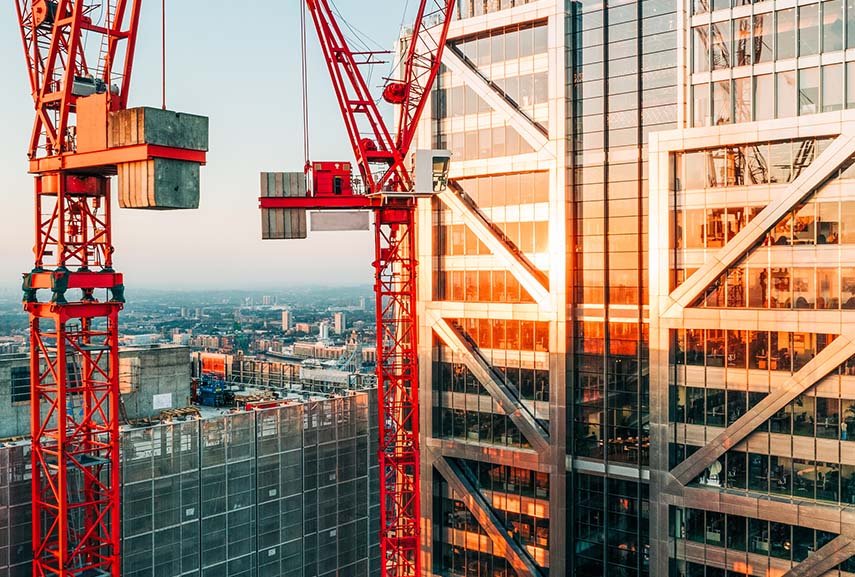ALTERNATIVE assets also known as private or real assets can include property, infrastructure, commodities, and private equity.
For fund investors well versed with bonds and equities, there’s a growing narrative that you can diversify even more by investing in alternatives.
Preqin, a specialist alternatives consultancy, expects alternative assets under management to rise from $13.7tn – as of year-end 2021 – to $23.3tn in 20271.
Last year, the case for the 60/40 portfolio, which divides a portfolio between equities (60%) and bonds (40%), was on shaky ground after both fell in tandem in 2022. Some major financial firms even went as far as to warn investors about the 60/40 portfolio, encouraging investors to buy a wider range of assets. It only emphasises the importance of diversification.
For most investors, advisers would only suggest a minimal exposure to alternatives, if at all.
The Fidelity Select 50 Balanced Fund, for instance, which is designed to be a ready-build portfolio, holds around 11% in ‘other’ or alternative assets.2
Here’s a glance across three of the most popular alternative investments:
1. Property
Property moves differently to equities and bonds. You can gain access via passive or actively-managed funds or an investment trust.
Property funds create value through capital growth, so they are a good option if you’re looking to invest for the long-term. But they can also work for income focused investors as property investment trusts can offer regular dividends too.
Currently, commercial property is in the limelight. Although it took a significant hit during the Covid-19 pandemic and the rise of remote working, which has led to some companies reducing their office space, commercial property with sustainable credentials continues to be in strong demand.
A risk of property is its illiquidity, though with an investment trust some of this risk is reduced as it’s a closed-ended fund.
Select 50 funds to consider – iShares Environment & Low Carbon Tilt Real Estate Index Fund and the Balanced Commercial Property Trust.
Five-year performance of real estate
| (%) As at 30 June | 2018-2019 | 2019-2020 | 2020-2021 | 2021-2022 | 2022-2023 |
|---|---|---|---|---|---|
| MSCI World Real Estate Index | 10.9 | -9.0 | 30.5 | -10.8 | -4.9 |
Source: Refinitiv 30.6.18 to 30.6.23. Total returns in US$ terms.
Past performance is not a reliable indicator of future returns
Property performed well between 2020 and 2021 despite the Covid-19 pandemic. It was driven by demand for residential properties, while commercial property understandably slumped due to global lockdowns. The following year, global property recovered some of its losses but in the last year, high interest rates have made it difficult for property to thrive like it did during the pandemic.
2. Gold
Gold has long been a staple in an investment portfolio. Like property, gold moves differently to equities and historically, it has retained its value during volatile periods like the 2008 financial crisis.
There are a range of ways you can get exposure to gold. For example, investing in the shares of gold mining companies or via exchange traded commodities which tracks the price of gold.
A downside of gold is that doesn’t deliver an income so it may be more appealing if you want growth.
Select 50 funds to consider – Ninety One Global Gold Fund and the iShares Physical Gold ETC.
Five-year performance of gold
| (%) As at 30 June | 2018-2019 | 2019-2020 | 2020-2021 | 2021-2022 | 2022-2023 |
|---|---|---|---|---|---|
| S&P GSCI Gold | 12.1 | 25.7 | -3.9 | 1.3 | 6.2 |
Source: Refinitiv 30.6.18 to 30.6.23. Total returns in US$ terms.
Past performance is not a reliable indicator of future returns
Unlike property, gold has delivered a steadier performance over the past five years. Between 2019 and 2020, gold soared. In the past year, gold has remained in the positive, despite sticky inflation and high interest rates. It only emphasises gold’s performance as a safe haven during market uncertainty.
3. Infrastructure
Investing in infrastructure can include everything from roads, schools, hospitals, and energy distribution. Energy infrastructure is particularly a key theme.
Long-term energy security is front and centre given Europe’s reliance on Russian fossil fuels. Between 2021 and 2027, Preqin forecasts that Europe-focused infrastructure will see the highest compounded annual growth rate in its assets under management of all major global regions, at 17.8%.
Again, like property, illiquidity may be an issue as investing in infrastructure is usually for the long-term, so it’s more appropriate if you’re a long-term investor.
Select 50 fund to consider – First Sentier Global Listed Infrastructure and International Public Partnerships Limited.
Five-year performance of infrastructure
| (%) As at 30 June | 2018-2019 | 2019-2020 | 2020-2021 | 2021-2022 | 2022-2023 |
|---|---|---|---|---|---|
| MSCI World Core Infrastructure | 16.7 | -3.6 | 20.4 | 2.3 | -1.4 |
Source: Refinitiv 30.6.18 to 30.6.23. Total returns in US$ terms.
Past performance is not a reliable indicator of future returns
Infrastructure performed well between 2020 and 2021, just like gold and property. It has only posted losses in the last year. Again, infrastructure is impacted by interest rates, but its losses are not nearly as volatile as property. Over the past five years, infrastructure has remained resilient.
The key message is that alternative investments should be considered as a small part of a portfolio, they aren’t a substitute for traditional asset classes.
Source:

